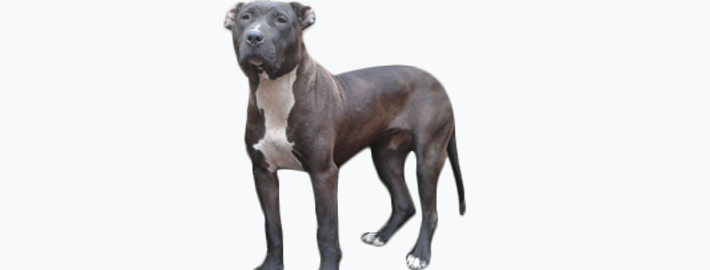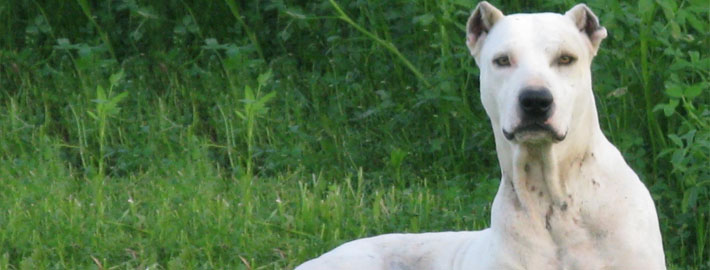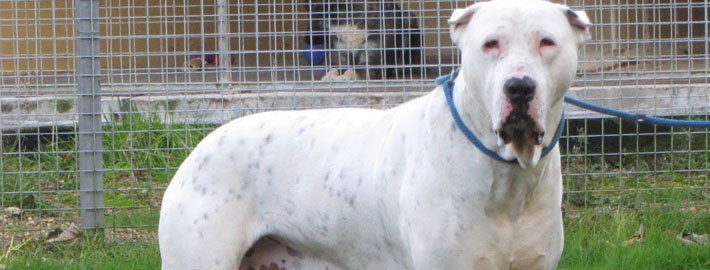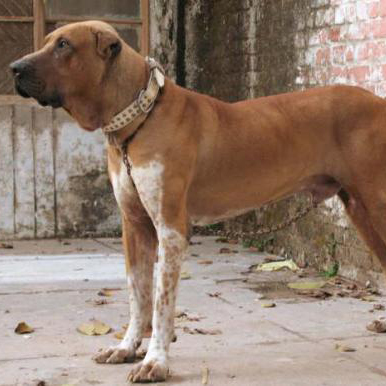What makes the Bully Kutta Unique?
More commonly found in Pakistan than their homeland of India, Bully Kuttas are also known as Indian Mastiffs, Pakistani Bulldogs, and Bohli Kuttas. The name they are referred to in this article is actually a corruption of Bohli Kutta, a term that means “heavily wrinkled dog” in Sindhi and Urdu. Westerners changed the first part of the appellation to ‘Bully’ because the breed was a lot like the dogs they had already grouped under that term.
Breed Groups
Page Contents
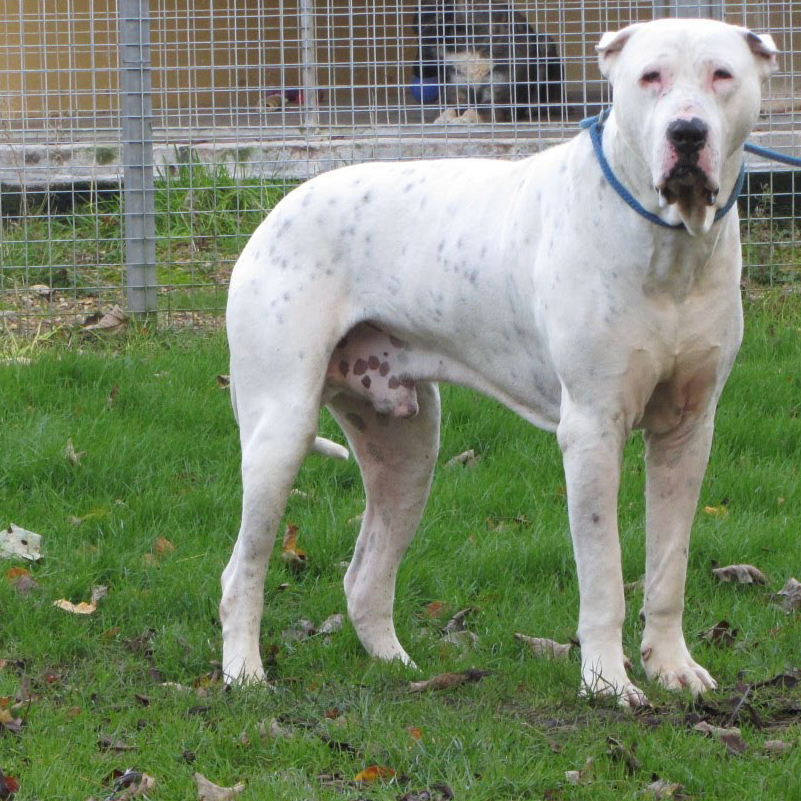
SnapShot
| Size: | Males – 81.3 to 88.9 cm (32 to 35 inches) Females – 71.1 to 81.3 cm (27.9 to 32 inches) |
| Weight: | Males – 64 to 95 kg (29 to 43 lb) Females – 64 to 95 kg (29 to 43 lb) |
| Origin: | India, Pakistan |
| Life Span: | 8 – 10 Years |
| Colour: | White in color, however fawn, brindle, brown, black and various bicolors are also common |
| Litter Size: | 6 to 8 puppies |
Is the Bully Kutta Right For You?
Members of this breed are nonetheless known for their loyal natures. They are protective of their family members and their family’s property. These dogs are particularly wary of strangers and they have a loud bark. As a result of these aforementioned traits, Bully Kuttas are commonly used as estate guardians in their homeland and in other areas around the world.
These can even be quite playful and affectionate. They additionally get along just fine with kids if they have been raised around them. Prospective owners should note that the Bully Kutta’s tolerance for children does not extend to other pets and particularly not other dogs.
In 5 Words
- Alert
- Energetic
- Tenacious
- Responsive
- Intelligent
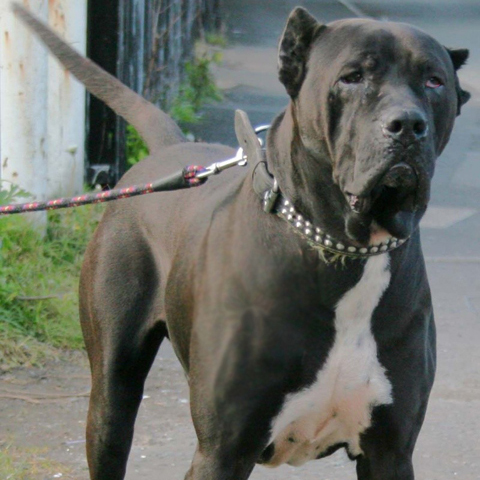
Characteristics
Learn About the Bully Kutta
Description
General Description
Although they are massive dogs, Bully Kuttas are very agile and incredibly speedy. This is probably because they are comparatively leaner than other mastiff breeds. These dogs have wide heads, loose skin, and pendant ears. Their teeth generally meet in a scissors bite. Another breed feature is their small, almond shaped eyes. These dogs additionally possess muscular bodies with strong bones and long legs that help them go the distance. Bully Kuttas have straight front limbs, but their back legs are angled and set far apart. Their elevated rear ends help give them their distinctive gait. These dogs have high-set tails that are long and curly. The aforementioned appendages taper to a point and sway when the animals are in motion.
Size
Females of this breed typically weigh between 130 and 150 pounds (59 to 68 kilograms). They stand between 28 and 36 inches (71 and 91 centimeters) in height. By comparison, male Bully Kuttas are around 30 to 44 inches (76 to111 centimeters) tall and they usually weigh between 150 and 170 pounds (68 and 77 kilograms). However, members of this breed can easily weigh over 200 pounds (91 kilograms).
Coat
Members of this breed have coats that are short in length and glossy in texture. Their bellies are entirely devoid of fur, leaving their black or speckled skin to show through. Most Bully Kuttas have white fur. However, these dogs were often bred for their fighting skills and their appearance has not been standardized. Coats that are harlequin, fawn, black, red, brindle, brown or a combination of two colors are occasionally present in members of this breed. The dogs may also have various markings on their bodies in the aforementioned hues.
Short History of the Bully Kutta
Although the breed was created in the Thanjavur and Tiruchi regions of southern India, Bully Kuttas are more commonly found in Pakistan today. As is the case with most dog varieties, there seems to be some serious dispute over how these individuals first came into being. According to one report, ancient Persian breeds were thought to have been combined with Molossus dogs from Assyria in order to produce the specimens that were subsequently written about by Alexander the Great and Aristotle. These dogs were also used by the Persian army and were brought along for the ride when these forces invaded Greece. While historians support this theory, another explanation for the breed’s existence is that the British created the breed while they were busy taking over the Indian subcontinent. In this case, the dogs are said to have a combination of English Bull Terrier, English Mastiff, and Pointer ancestry though other hunting dog varieties might have gotten caught up in the mix as well. In any case, these dogs are now typically used as estate guardians in Pakistan. In some places, they are also participants in the lamentable pastime of dog fighting.
Temperament
Although there is some variance in personality, Bully Kutta generally have docile temperaments if they have been properly taught. However, training them well when they are young is the key to good behavior in the future. These can even be quite playful and affectionate. They additionally get along just fine with kids if they have been raised around them. Prospective owners should note that the Bully Kutta’s tolerance for children does not extend to other pets and particularly not other dogs.
Members of this breed are nonetheless known for their loyal natures. They are protective of their family members and their family’s property. These dogs are particularly wary of strangers and they have a loud bark. As a result of these aforementioned traits, Bully Kuttas are commonly used as estate guardians in their homeland and in other areas around the world.
Caring for Your Bully Kutta
General Health
With an average lifespan of 8 to 12 years, Bully Kuttas are generally healthy dogs. Blindness and arthritis may appear in older individuals but this is also true for most breeds. Bloat is another health issue that is common in larger dogs. In order to reduce the risk of bloat, owners should feed these canines several small meals per day rather than distributing the dog’s daily allotment of food all at once.
Care
Daily
Bully Kuttas require a daily walk and plenty of space in which to play. It is also a good idea to make sure these dogs are properly trained and know not to pull on the leash when they are being walked. Owners should additionally keep in mind that some of these dogs drool heavily. These individuals will probably need to have their faces cleaned on a daily basis to keep debris from building up in the folds of their faces.
Weekly
All dogs benefit from having their teeth cleaned a few times per week.
Monthly
To keep pets from falling victim to avoidable illnesses, owners should give their dogs’ parasite prevention medicine on a regular basis.
Grooming & Bathing
Members of this breed have short coats and don’t require a lot of grooming. However, pet owners may want occasionally brush their dogs to get rid of any loose hairs that may be present and keep the dog looking its’ best. Bully Kuttas should also have their toenails trimmed on regular basis to keep any injuries from occurring.
Exercise & Training
Due to their dominant personality type, members of this large breed are not recommended for inexperienced or weak-willed owners because these people will find Bully Kuttas very difficult to manage. These dogs must always receive plenty of exercise, training, and exposure to people in order to be at their best. As is the case with any pet, Bully Kuttas need clearly defined, consistent rules to keep them from getting into trouble. Obedience training should be started when the dogs are young because they can quickly grow into large, unruly individuals. However, members of this intelligent breed are not incapable of learning things quickly provided that they receive sufficient motivation to do so. Reports vary on how difficult Bully Kuttas are to train so perhaps this characteristic simply depends on the individual dog and the person training it. Members of this breed will also need to meet as many family members as possible in their youth so that they do not grow overly suspicious of people that will be making frequent visits to their home.

